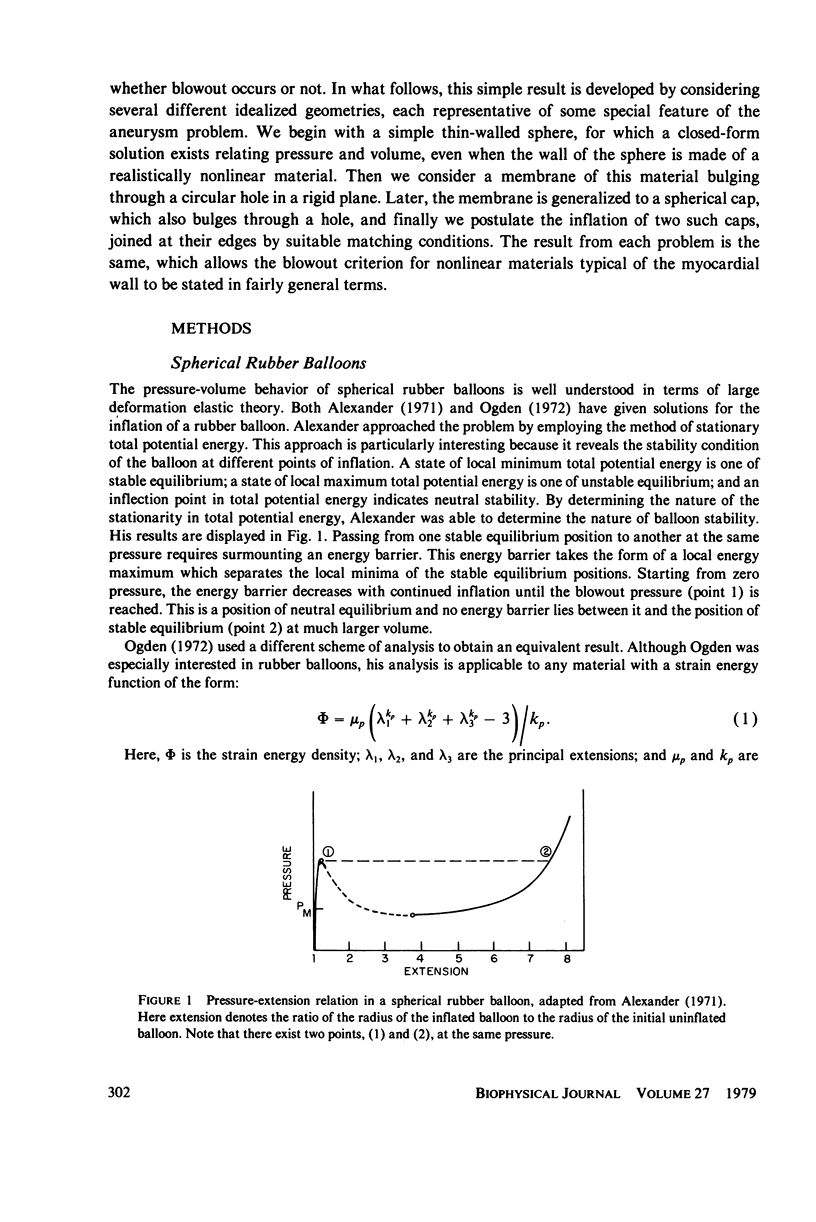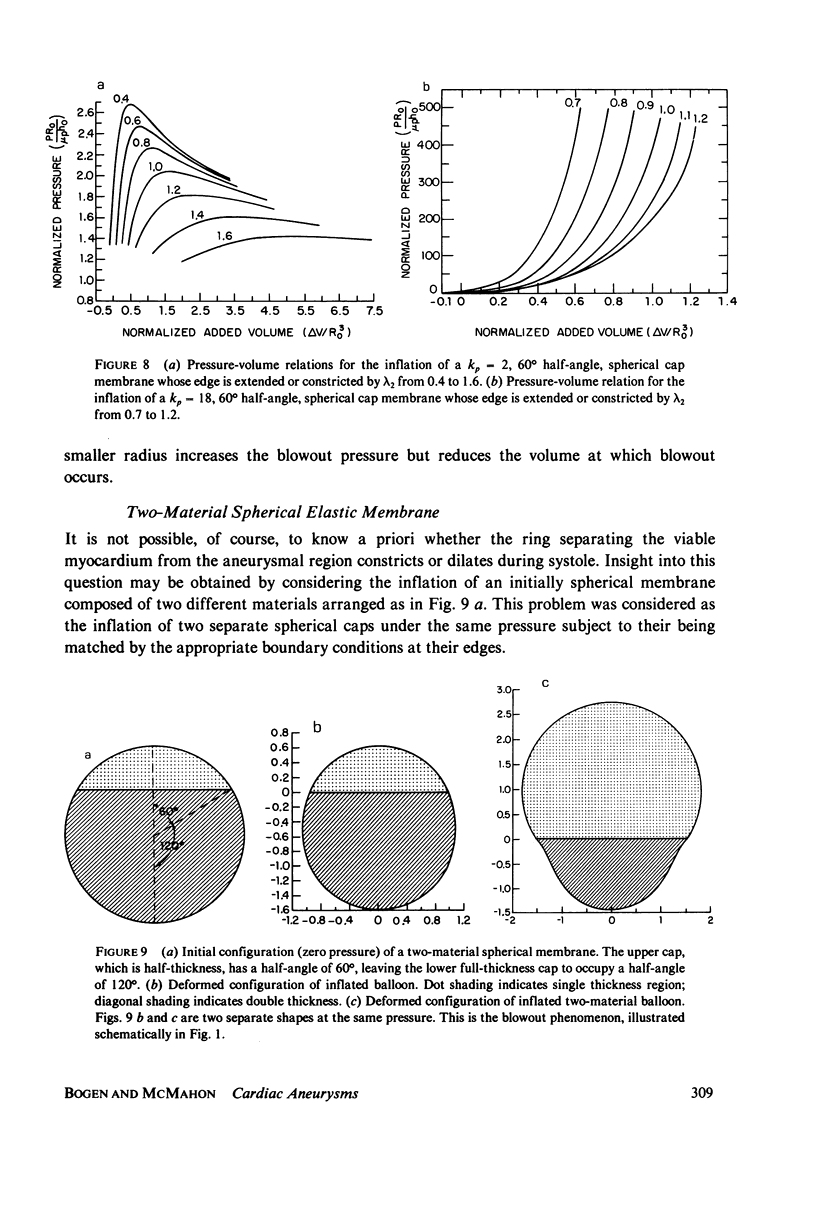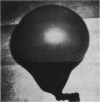Abstract
The possibility is suggested that cardiac aneurysms are formed when an infarcted region of the ventricular wall becomes elastically unstable and "blows out". The consequence of such a blowout could be a large saccular aneurysm or even cardiac rupture. We use a nonlinear stress-strain relation capable of describing both the passive and active myocardial wall to examine this possibility in terms of large-deformation membrane theory. Ventricular infarcts made of a material having physical properties like rubber would be expected to blow out, but those made of passive myocardium would not.
Full text
PDF















Images in this article
Selected References
These references are in PubMed. This may not be the complete list of references from this article.
- Grimm A. F., Katele K. V., Kubota R., Whitehorn W. V. Relation of sarcomere length and muscle length in resting myocardium. Am J Physiol. 1970 May;218(5):1412–1416. doi: 10.1152/ajplegacy.1970.218.5.1412. [DOI] [PubMed] [Google Scholar]
- Janz R. F., Waldron R. J. Predicted effect of chronic apical aneurysms on the passive stiffness of the human left ventricle. Circ Res. 1978 Feb;42(2):255–263. doi: 10.1161/01.res.42.2.255. [DOI] [PubMed] [Google Scholar]
- Laird J. D. Asymptotic slope of log pressure vs log volume as an approximate index of the diastolic elastic properties of the myocardium in man. Circulation. 1976 Mar;53(3):443–449. doi: 10.1161/01.cir.53.3.443. [DOI] [PubMed] [Google Scholar]



